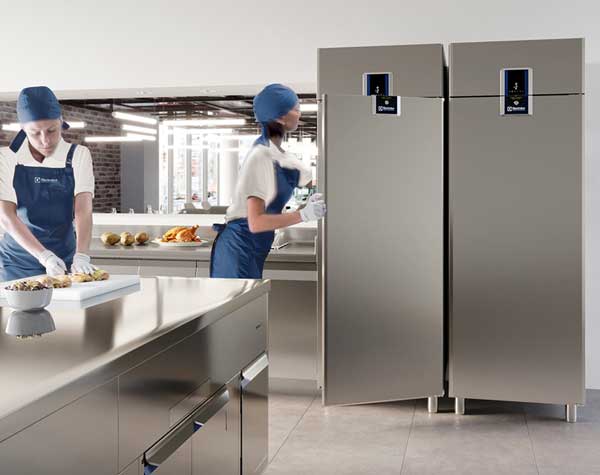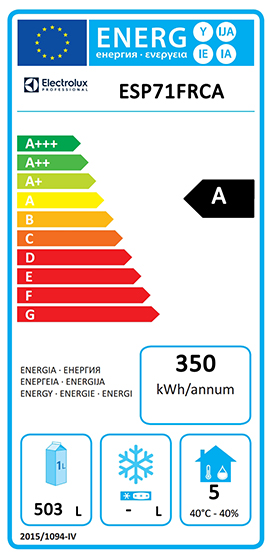How to read the commercial energy label
First introduced in 1994, the energy label regulation was devised to help product manufacturers easily identify the energy consumption of their appliances. For nearly 30 years, it has also helped end-users – both in a domestic and professional setting – make an informed purchase based on the efficiency of the product in question.
What is an energy label?
In short, it is a label that appears on both the product and its packaging detailing key information relating to the energy efficiency of the unit in question. While it has appeared in various guises since its launch, a new GB energy labelling directive came into force in the UK in January 2021. However, the requirements for commercial refrigeration appliances are based the those set out in the European Ecodesign Directive, and cover:
How to read commercial refrigerator energy labels?
The GB energy label for commercial refrigeration devices displays all the key performance information needed for an end-user to determine the energy efficiency of the appliance.
As well as the manufacturer’s details and product reference, it includes:
- Energy class
- Annual energy consumption
- Storage capacity
- Climate class

Other factors which can impact the efficiency of commercial refrigeration include the choice of insulation materials and the thickness, as well as the refrigerant used. Electrolux Professional models use the natural R290 refrigerant gas. This is both more sustainable than hydrofluorocarbon (HFC) refrigerants, and less corrosive of core internal parts such as the compressor.

Energy classes for electrical appliances
The energy class is the overarching indicator of an appliance’s energy efficiency. Under the GB energy label, the energy class for a commercial refrigerator ranges from A+++ to G, and is based on the appliance’s Minimum Energy Performance Standards (MEPS). A+++ is the most efficient, and G the least.
Annual Energy consumption (kWh/year)
The GB energy label also provides a clear overview of the expected annual energy consumption of a commercial refrigerator. Operators can then use this data to then calculate the projected running costs by multiplying the kWh by the unit cost.
Storage Capacity
Another useful piece of information on the GB energy label is the maximum capacity – or net volume (L) – for a commercial refrigerator or freezer. This is incredibly important as overloading a commercial refrigerator can result in poor airflow around the produce stored within the unit. Not only could this promote early spoilage, but it could also increase the pressure on the compressor and condenser, resulting in more energy being used than necessary. Electrolux Professional’s ecostore refrigerated cabinets have been designed to maximise capacity, and can offer an average of 50 litres more than other models with a comparable footprint.
Climate Class
The final key piece of information on the GB energy label is the Climate Class. This determines the capability of the product to correctly preserve food in different working conditions. Given the high temperatures often reached in professional kitchens, any commercial refrigeration units purchased should be built to either Climate Class 4 (‘normal duty’: 30°C / 55% humidity) or Climate Class 5 (‘heavy duty’: 40°C / 40% humidity) to ensure they can operate effectively in this environment.
Conclusion
Ultimately, an energy label is a very useful tool for helping end-users make an informed choice when purchasing commercial refrigeration. Given refrigeration is rarely switched off, finding the right unit which will keep running costs to a minimum will go a long way to helping run a profitable and sustainable catering operation.
